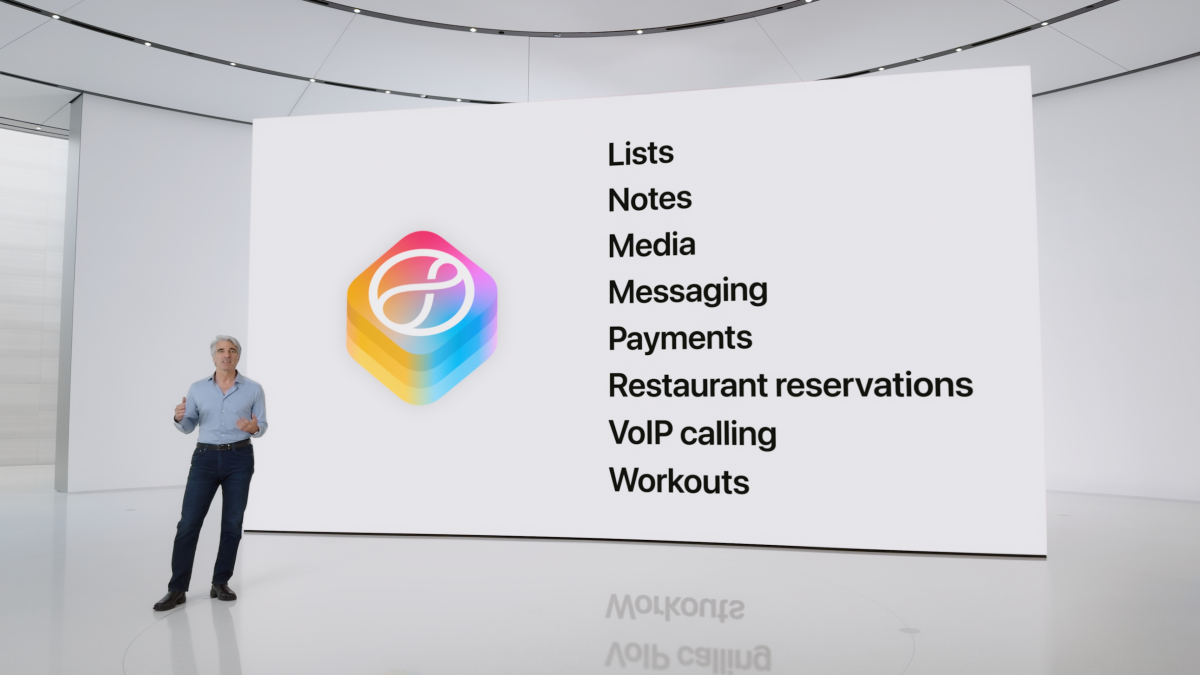Apple Intelligence, the much-awaited company’s deeper foray into artificial intelligence, debuted Monday at the Worldwide Developers Conference. It will be included in iOS 18, iPadOS 18, and MacOS Sequoia, and OpenAI’s ChatGPT technology will also be more firmly connected on those systems.
Apple products have greatly benefited from artificial intelligence for years. But the general popularity of OpenAI’s ChatGPT chatbot has focused more attention on generative artificial intelligence—models educated on vast amounts of data capable of producing material in response to stimuli. All eyes have been on Apple to see how the firm intends to introduce generative artificial intelligence to its own devices as rivals like Samsung, Google, and Microsoft have been including the tech in their most crucial offerings. At WWDC 2024, we will finally have that response.
Related: OpenAI Unveils ChatGPT’s Human-like Upgrade: GPT-4o Model
Apple Intelligence’s approach revolves mostly around knowing personal context when answering questions and completing tasks. Apple seems to be utilizing this strategy to set its own AI initiatives apart from those of rivals’ disclosed earlier. To help you determine whether you can make it to an event on time, the business said, for instance, how Apple Intelligence can grasp several variables like traffic, your calendar, and contacts.
Apple Intelligence and Privacy Concerns
Apple began the AI component of its keynote with an eye toward privacy as well. It clarified the number of on-device running artificial intelligence models, which is often regarded as more private since data does not have to pass across the internet. Apple will use a technique called private cloud computing at times when a job might call for bigger models. Tasks requiring higher computational power will run on servers Apple has specifically built to run on Apple Silicone as needed. Apple Intelligence will determine whether on-device processing of a task is possible.
Revolutionizing Siri with Apple Intelligence
Apple’s AI drive revolves mostly around Siri. With this version, the voice assistant is evolving in a natural, relevant, and personal manner. Siri should be able to comprehend you even if you fumble all over your words; you would be able to converse in a more natural tongue. Siri should know what you mean, as it can ask follow-up questions and knows context. Furthermore, supported by Apple’s virtual assistant will be text input.

Since it will be able to respond to questions regarding particular iPhone functions, it is also improving in assisting you to use your iPhone. More Siri upgrades will be arriving throughout the course of the upcoming year. It sounds like the updated Gemini that Google revealed last month: Siri is gaining on-screen awareness, so it can act depending on what’s on your phone’s screen. One instance might be updating someone’s address on their contact card following a text message delivery.
Siri will be able to use your personal context to assist you in completing tasks and acting inside apps, including sharing pictures on your behalf. When a loved one’s flight is landing, for instance, you may cross-reference flight information that might have been sent to you via email or text message. Siri will also be able to include other data, such as forthcoming lunch plans, so you may ask it how long it will take to get from the airport to the restaurant without hopping between applications.
Like tools we have seen from Google and Microsoft over the past year, several of the new capabilities in Apple Intelligence are oriented toward productivity. Apple Intelligence can highlight and summarize priority notifications as well as assist you in composing emails in several styles, for instance. Additionally included is a proofreading tool for grammar and word choice check-through.
This Might Interest You: ChatGPT Edu: Enhancing University Education with AI
iOS 18, iPadOS 18, and MacOS Sequoia will have these so-called writing tools available throughout Notes, Mail, Pages, and third-party apps.
Apple also intends to utilize artificial intelligence to clean your email inbox, much like Google and Microsoft. Priority Messages, a new tool, will reveal the most critical emails—like a boarding pass—as well as email summaries without opening a message.
Regarding notifications, priority alerts will show at the top of the stack, and there will be alerts to enable you to quickly acquire an overview of pertinent messages at a glance.
Image Playground in Apple Intelligence
Apple is also unveiling Image Playground, an image generator. From themes, accessories, locations, and more, you can pick these settings for your playground. If you have a certain idea in mind, you can incorporate it into your playground.
Image generation comes in three flavors: sketch, illustration, and animation. It will also propose, as it knows your background. Though it will also be included in apps like Messages, Image Playground is only accessible as an app. Every image is produced right on the device.
Image Wand is a new feature available on the Notes app that allows you to access the Image Playground by circling a crude sketch inside a note, therefore producing a more realistic image. The Notes app will let you additionally capture, transcribe, and summarize audio.
Enhancing User Experience with Apple Intelligence
Apple Intelligence can intervene on your behalf as well. You can ask it to retrieve files from last week, play a podcast that a friend or loved one emailed the other day, and more.

Additionally, improving the search capabilities of the Photos app is natural language based on broad descriptions, allowing you to locate particular images. Last month, Google unveiled a comparable capability for Google Photos. Additionally, there is a new Clean Up tool designed for clearing background items from images.
Typing in a description is one of the more unusual tools to build stories in the Pictures app. To arrange images that suit such categories, you might make a memory movie based on “everything we saw in Iceland” or “last winter in our school.”
Apple and ChatGPT
Apple is also working with OpenAI to include ChatGPT in MacOS Sequoia, iPad OS 18, and iOS 18. If you use Siri, for instance, Apple’s virtual assistant will be able to use ChatGPT’s knowledge as needed to address a particular topic. For example, you might take a picture to find out what kinds of plants would look great on your deck, and Siri could use ChatGPT to respond.
Related: ChatGPT Coming to Apple’s iPhone with iOS 18?
Apple notably notes that before using the service to gather replies, you will be asked whether you wish to use ChatGPT.


